Microsoft word - research briefing #21 final
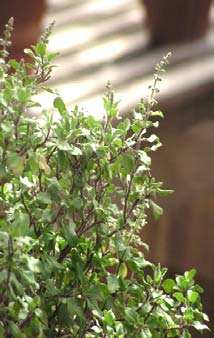
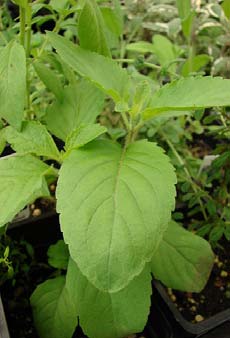
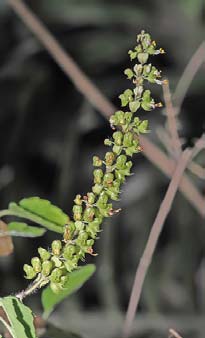
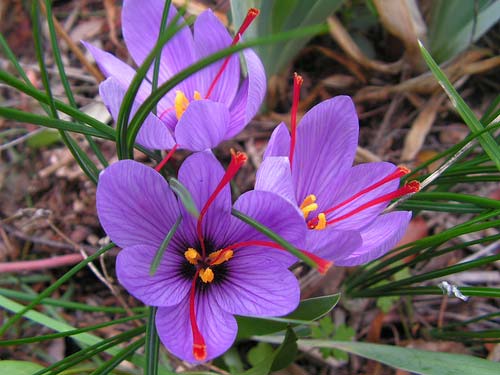
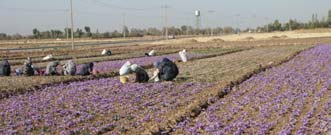
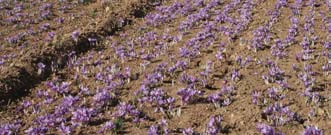
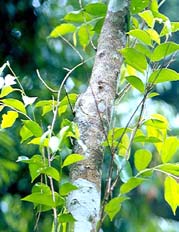

Managing Natural Resources for Sustaining Future Agriculture
Research Briefings Volume (3), No (21), 2011
Developing Herbal Pharmaceutics in Pakistan – II:
Distinctiveness of Selected Medicinal Herbs and Uses
Shaista Kokab and Dr.Shahid Ahmad
Natural Resources Division, Pakistan Agricultural Research Council, Islamabad, Pakistan
Managing Natural Resources for Sustaining Future Agriculture
Research Briefings Volume (3), No (21), 2011
Developing Herbal Pharmaceutics in Pakistan – II: Distinctiveness
of Selected Medicinal Herbs and Uses
Shaista Kokab and Dr. Shahid Ahmad
Motivation
While preparing the Research Briefings on "Developing Herbal Pharmaceutics in Pakistan – Part I: Potential,
Issues and Constraints of Herbal Products", the need arise to prepare a companion Briefings covering
distinctiveness of selected medicinal herbs. These Briefings are released sequentially so that readers can have
complete information. Why Natural Resources Division is assigning higher priority for herbal pharmaceutics is
a question to be addressed? The higher priority is because of two reasons. Firstly, that rural population can't
afford the prescription fee and cost of allopathic medicines and thus an alternate option is now essential. Food
is available to the majority of rural population and poor urbanites but they do not have any access to health
services. Senior citizens in rural and urban areas are facing hardship in meeting their minimal health support.
Secondly, the production of herbs in Pakistan will provide a new source of livelihood to the resource-poor
farmers and landless because these can be grown as Home Pharmacy. The two reasons are the major
motivation for preparing companion Briefings. Third Briefings in succession will address the Perspective Plan
for Production of Herbs and Herbal Products.
1.
Thymol seeds (‘Ajwain')
Ajwain (Trachyspermum copticum) is herbal plant originated from India and is known for its medicinal uses. Its
seeds are tiny, hot, pungent and slightly bitter in taste. It contains ‘thymol' having germicidal, anti-fungal and
anti-inflammatory characters. It also contains calcium, iron, phosphorous, carotene, thiamine and riboflavin and
acts as an appetizer and commonly used as food preservative. It not only enhances digestion, rather it effectively
manages conditions like nasal congestion, loose motion and vomiting. Seed is used in Berbere, a mixture of
spices (pepper, garlic, ginger, black pepper, etc.). Its oil contains steroptin, thymine, terpene and cymene.
Major medicinal uses of Ajwain is:
It is very effective for digestion. Boil two liters of water with small pieces of ginger, then put two
teaspoons of Ajwain seeds into it, allow water to cool down and take one glass of mixture every one hour for diarrhea, dyspepsia, dysentery, cholera, and acidity.
For chronic bronchitis, asthma, cold and cough, boil half litre of water mix with one tea spoonful of
Ajwain seeds, then drink hot mixture. It works amazingly.
During an acute pain episode, take half teaspoon of ajwain seed powder, mix it in a glass of warm , milk ,
sweeten it with a teaspoon of honey and drink it once a day. It also relieves depression, mental stress, exhaustion, dizziness, restlessness and anxiety.
For throat infection like acute pharyngitis, sore throat, hoarseness of the voice, a half tea spoon of Ajwain
powder mixed into a cup of hot chicken soup can be sipped slowly twice a day.
Use a small piece of ginger finely chopped, add five to six leaves of oregano, 1/4 teaspoon of Ajwain duly
soaked in water, small quantity of tea leaves and jaggery, strain before you drink it. It gives energy to the body with a calm disposition if taken once in a day during summer season. However, diabetes should avoid using this preparation because the mixture contains jaggery, which can increase blood sugar.
Natural Resources Division, Pakistan Agricultural Research Council, Islamabad, Pakistan
Managing Natural Resources for Sustaining Future Agriculture
Research Briefings Volume (3), No (21), 2011
For gynecological troubles like dysmenorrhea eat a fist full of ajwain seeds daily for relief. For wound or skin infection, make paste of ajwain seed and apply it on the affected part. The seed acts as
an antiseptic agent having the ability in cleaning wound and treating skin infection.
Eating half spoon of ajwain seeds every day followed by drinking of warm water can help in treating
respiratory infection like Asthma
The extracted oil from Ajwain seeds is beneficial for treatment of neuralgic pain and rheumatism. Ajwain seeds provide relief from common cold. Wrap ajwain seeds in a piece of cloth and leave it
overnight. For children, take smaller quantity of ajwain seeds as they will not be able to tolerate smell.
Ginger (‘Adrak')
Ginger is classified as a stimulant, carminative and used for dyspepsia, gastroparesis, slow motility symptoms,
constipation and colic. It is generally recognized as safe, though it does interact with some medications,
including warfarin. It is contraindicated in people suffering from gallstones as it promotes the production of bile
(Antonie 2007). Ginger may also decrease pain from arthritis, though studies have been inconsistent, and may
have blood thinning and cholesterol lowering properties that may make it useful for treating heart diseases
(UMMC 2006).
Major medicinal uses of ginger are:
Tea brewed from ginger is a remedy for colds. Gingerale and ginger beer are also used as stomach
settlers in countries where beverages are made. Ginger water is used to avoid heat cramps in the USA.
An acute overdose of ginger is usually in excess of about 2 gms of Ginger per kg of body weight
(Saraswat et al. 2010), dependent on level of ginger tolerance, and can result in a state of central nervous system over-stimulation called ginger intoxication or colloquially the "ginger gitters".
Advanced glycation end products are associated in the development of several pathophysiologies
including diabetic cataract. Ginger was effective against the development of diabetic cataract in rats mainly through its antiglycating potential and to a lesser extent by inhibition of polyol pathway. Ginger is useful for prevention or delay of diabetic complications (Zainab et al. 2006; Taghizadeh et al. 2007).
In China, "ginger scrambled eggs" is a common remedy for cough. Chinese also make dried ginger
candy that is fermented in plum juice and sugared and is commonly consumed to suppress cough. Ginger has also been historically used to treat inflammation and supported by several scientific studies.
Clove (‘Laung')
Cloves originated from the Southern Phillipines and the Molluca Islands of Indonesia. The clove tree is an evergreen tree that grows up to 50 feet. The clove tree is pyramid-shaped and strongly aromatic. Twice each year unopened flower buds can be picked and dried. The dried flower buds are called cloves. Leaves and stems can be used, but the flower buds contain the most essential oil. Taken from the dried flowers of the clove tree, cloves are well known as an all-purpose herbal remedy. While they are mainly known in the West as a spice, cloves have been used throughout South-east Asia historically to cure almost any ailment. It has continued to be a valuable herb for treating a wide spectrum of problems. It has also been used to make bitter herb preparations more palatable. It is powerful aphrodisiac used in India. During the reign of the Han dynasty, anyone who planned to address the Chinese Emperor was expected to put
Natural Resources Division, Pakistan Agricultural Research Council, Islamabad, Pakistan
Managing Natural Resources for Sustaining Future Agriculture
Research Briefings Volume (3), No (21), 2011
cloves in his or her mouth to improve bad breath. The oil in cloves has been found to be antibacterial and was once used to treat tuberculosis, scabies, malaria, and cholera. Cloves have been known to ease digestive problems such as colic, bloating and gas. The same antispasmodic properties that make it suited for the digestive system also aid in the easing of coughs and muscle cramps. While it has roots in Asia, the growth of cloves has extended to Brazil, the West Indies, Tanzania, and Madagascar. Cloves are used in Indian Ayurvedic medicine, Chinese medicine, and western herbalism and dentistry, where the essential oil is used as painkiller for dental emergencies. Cloves are used as a carminative, to increase hydrochloric acid in stomach and to improve peristalsis. Cloves are also said to be a natural anthelmintic (Phyllis and James 2000). The essential oil is used in aromatherapy when stimulation and warming are needed, especially for digestive problems. Topical application over the stomach or abdomen are said to warm the digestive tract. Clove oil, applied to a cavity in a decayed tooth, also relieves toothache (Anonymous #1). It also helps to decrease infection in the teeth due to its antiseptic properties.
Major medicinal uses of cloves are:
Clove is used in formulations for impotence or clear vaginal discharge from yang deficiency, for morning
sickness together with ginseng and patchouli, or for vomiting and diarrhea due to spleen and stomach coldness (Bensky et al. 2004).
Clove oil is used in various skin disorders like acne, pimples, etc. It is also used in severe burns, skin
irritations and to reduce the sensitiveness of skin. It is also used for hypotonic muscles, including for multiple sclerosis (Anonymous #2).
Cloves and clove oil are for dental pain as supported by many western studies. It also reduces blood sugar
levels (Anonymous #3).
Clove buds have anti-oxidant properties and can be used for developing formulations for anti-aging
(Kurokawa 1998).
Clove can be used as an antiseptic for viral conditions, digestive aid, stimulant for mind and body, and to
treat skin conditions.
Sandalwood (Sandal or Chandan) is a unique plant that has an extraordinary fragrance. Tree bark is extremely smooth and sandal paste is applied on the body to impart an extremely smooth, unblemished and lustrous look to the skin. The fragrance of sandalwood is also said to be a proven aphrodisiac. The family is ‘Santalaceae' and genus and species is ‘Santalum album'. It is a small, graceful tree with part parasitic feeding habits with yellow to maroon flowers. It has fragrant wood. The heartwood is used, as well as the essential oil extracted from it. It is considered a cooling and calming aromatic herb, with astringent, antispasmodic, digestive, diuretic, analgesic and antiseptic properties. Sandalwood oil is extremely expensive, although a variety of cheaper sandalwood essential oil is also in the market. Natural Resources Division, Pakistan Agricultural Research Council, Islamabad, Pakistan
Managing Natural Resources for Sustaining Future Agriculture
Research Briefings Volume (3), No (21), 2011
Major medicinal uses of sandalwood are:
Sandalwood can be used for disorders of genital and urinary tract, stomach and digestive problems, as well
as for fever and sunstroke. Also used to treat dizziness as well as general chest complaints.
Used for relaxing, reducing confusion and balancing the mind. Helps to clear up catarrh, as well as a dry cough and boosts the digestive system, especially helpful in
Sandalwood essential oil helps to moisturize and hydrate ageing, dry or flaky skin, relieving itching and
inflammation and its astringent action balances oily skin conditions.
None noted, but take note that sandalwood essential oil has a very persistent fragrance and should be used sparingly for that reason.
Cardamom and Amomum (‘Choti and Baree Ellaichi')
Cardamom refers to several plants of the genera Elettaria and Amomum in the ginger family Zingiberaceae.
Both genera are native to India; they are recognized by their small seed pod, triangular in cross-section and
spindle-shaped, with a thin papery outer shell and small black seeds. Elettaria pods are light green while
Amomum pods are larger and dark brown. The word cardamom is derived from the Latin cardamomum, the
latinisation of the Greek (kardamomon), a kind of an Indian spice plant. The earliest attested form of the word
kardamon is the Mycenaean Greek ka-da-mi-ja, written in Linear B syllabic script (Charlton and Charles;
Henery and Scott).
The two main genera of the ginger family that are named as forms of cardamom are:
Elettaria: commonly called cardamom, green cardamom, or true cardamom, which is distributed from
India to Malaysia.
Natural Resources Division, Pakistan Agricultural Research Council, Islamabad, Pakistan
Managing Natural Resources for Sustaining Future Agriculture
Research Briefings Volume (3), No (21), 2011
Amomum: commonly known as black cardamom, brown cardamom, Kravan, Java cardamom, Bengal
cardamom, Siamese cardamom, white cardamom, or red cardamom, which is distributed mainly in Asia and Australia.
Both forms are used as flavorings in both food and drink, as cooking spices and as a medicine. Elettaria
cardamomum (the usual type of cardamom) is used as a spice, a masticatory, and in medicine; it is also smoked sometimes; it is used as a food plant by the larva of the moth Endoclita hosei.
Major medicinal uses of cardamom are:
Green cardamom is used to treat infections in teeth and gums, to prevent and treat throat troubles,
congestion of the lungs and pulmonary tuberculosis, inflammation of eyelids and also digestive disorders.
Used to break up kidney stones and gall stones, and was reportedly used as an antidote for both snake and
Amomum is used as a spice and as an ingredient in traditional medicine in China, India, Pakistan, Japan,
Korea and Vietnam. Also used to treat stomach-aches, constipation, dysentery, and other digestive disorders.
Increased demand since the 1980s, principally from China, for both Amomum villosum and Amomum tsao-ko
has provided a key source of income for poor farmers living at higher altitudes in localized areas of China, Laos
and Vietnam, people typically isolated from many other markets. Until recently, Nepal had been the world's
largest producer of large cardamom. Guatemala has become the world's largest producer and exporter of
cardamom, with an export total of US$137.2 million for 2007.
6.
Aniseed (‘Saunf')
Anise is a culinary herb that contains substantial amount of protein, fatty oil and crude fiber besides essential
oil, sugar, starch and ash. It also contains choline. It grows up to a height of 75 cm. Aniseed oil is a colorless or
pale-yellow liquid, with the characteristic odor and taste of the fruit. This oil has now replaced the fruits for
medicinal and flavoring purposes. The chief constituent of aniseed oil is anethole which is mainly responsible
for the characteristics flavor of the oil.
Major medicinal uses of aniseed are:
Aniseed is used for expelling wind from stomach. It can also be taken, in combination with other
digestives like ginger, cumin and pepper, in the form of an infusion. An easy way to prepare the infusion is to mix a teaspoon of aniseed in a cup of boiling water and leave it covered overnight. The clear fluid is then decanted and taken with honey. This is an effective treatment for indigestion, when there is fermentation in the stomach and the bowels.
Useful in treatment of cataract. Six gms of aniseed should be taken daily in the morning and evening. The
other way of taking this herb is to powder an equal weight of unrefined sugar. About 12 gms of mixture is to be taken in the morning and evening.
Beneficial in treatment of asthma due to its expectorant properties. Used to relieve flatulence and to remove catarrhal matter and phlegm from bronchial tube. These
properties are due to the presence of its essential oil. The seed also induces copious perspiration and increases the volume and discharge of urine.
Tea made from aniseed is given in case of sleeplessness. It is prepared by boiling 375 ml of water and
adding a teaspoon of aniseed. The water should be covered with a lid and allowed to simmer for 15
minutes. It should then be strained and taken hot or warm. Honey and hot milk will improve the taste. It
should be sipped either after meal or before going to bed.
Used externally as an insecticide against small insects such as head lice, mites and vermin. It also has
fungicidal properties.
Other home uses and remedies are:
Used to flavor curries, sweets, cake, cookies and biscuits. Oil is employed in medicine as an aromatic carminative to relieve flatulence. Being a mild expectorant, it
is used as an ingredient of beverages and liqueurs. It is also used as a flavoring agent for dental preparations and mouth washes. It should not be boiled too long as it may lose its digestive properties and essential oil during the process.
Natural Resources Division, Pakistan Agricultural Research Council, Islamabad, Pakistan
Managing Natural Resources for Sustaining Future Agriculture
Research Briefings Volume (3), No (21), 2011
The word ‘cinnamon' comes from Hebrew and Phoenician through the Greek word ‘kinnámōmon' (Samat and Bell 2009). Cinnamon bark is widely used as a spice. It is principally used as a condiment and for flavoring. It is used in the preparation of chocolate, especially in Mexico, which is the main importer of true cinnamon (FAO 2003). It is also used in many desserts recipes, such as apple pie, donuts, and cinnamon buns as well as spicy candies, tea, hot cocoa, and liqueurs. True cinnamon is more suitable for use in deserts. In the Middle East, it is often used in savory dishes of chicken and lamb. In the USA, cinnamon and sugar are often used to flavour cereals, bread-based dishes, and fruits, especially apples; a cinnamon-sugar mixture is even sold separately for such purposes. Cinnamon can also be used in pickling. Cinnamon bark is one of the few spices that can be consumed directly. Cinnamon powder has long been an important spice in Persian cuisine, used in a variety of thick soups, drinks, and sweets. It is often mixed with rosewater or other spices to make a cinnamon-based curry powder for stews or just sprinkled on sweet treats.
Medicinal and other uses of cinnamon are:
Leaf oil is very effective in killing mosquito larvae (Anonymous 2008). Cinnamaldehyde, cinnamyl
acetate, eugenol, and anethole that are contained in leaf oil have the highest effectiveness against mosquito larvae.
Anecdotal uses included boosting cognitive function and memory, treating rheumatism, helping with
digestion and relieving certain menstrual disorders.
Used to inhibit bacterial growth and food spoilage, making it a natural food preservative. Recommended recently to curb the urge for tobacco. National Health Agencies in different countries
recommend chewing cinnamon sticks when trying to quit the use of tobacco. Another effective product that helps to reduce overeating and tobacco use is cinnamon toothpicks (Felter 2007).
Oils had a reputation as a cure for colds and used to treat diarrhea and digestive disorders (Shan et al.
Cinnamon is high in antioxidant activity (Mancino-Filho et al. 1998; Lopez et al. 2005). Cinnamon could have some pharmacological effects in treatment of type #2 diabetes and insulin resistance
(Khan et al. 2003; Verspohl et al. 2005). Recent studies in phytochemistry have indicated that cinnamtannin B1 isolated from C. Verum bears possible therapeutic effect on type #2 diabetes (Tahir 2008), with the exception of postmenopausal patients studied on C. Cassia (Vanschoonbeek 2008).
Cinnamon has traditionally been used to treat toothache and fight bad breath and its regular use is believed
to stave off common cold and aid digestion (Alice 2007).
Regularly drinking tea made from the bark of Sri Lanka cinnamon could be beneficial to oxidative stress
related illness in humans, as the plant part contains significant antioxidant potential (Ranjbar 2008).
Saffron (‘Kesar or Zaffron')
Saffron has been used as a seasoning, fragrance, dye, and medicine for more than 3,000 years. The world's most expensive spice by weight, saffron consists of stigmas plucked from the saffron crocus (Crocus sativus). The resulting dried "threads" are distinguished by their bitter taste, hay-like fragrance, and slight metallic notes.
Natural Resources Division, Pakistan Agricultural Research Council, Islamabad, Pakistan
Managing Natural Resources for Sustaining Future Agriculture
Research Briefings Volume (3), No (21), 2011
Saffron is native to Southwest Asia, but was first cultivated in Greece. Iran is the world's largest producer of saffron, accounting for over half the total harvest (Anonymous 2003). In both antiquity and modern times, most saffron was and is used in the preparation of food and drink: cultures spread across Africa, Asia, Europe, and the Americas value the red threads for use in such items as baked foods, curries, and liquor. Medicinally, saffron was used in ancient times to treat a wide range of ailments, including stomach upsets, bubonic plague, and smallpox; clinical trials have shown saffron's potential as an anticancer and anti-aging agent. Saffron has been used to colour textiles and other items, many of which carry a religious or hierarchical significance.
Major medicinal and other uses are:
Reduces inflammation and used as stimulant and stomachic. Remedy for enlargement of liver and
infection of urinary bladder and kidneys. Administered in high doses it makes patient unconscious. Also useful in menstrual disorders.
It strengthens the heart and is a refrigerant for the brain. If soaked overnight in water and used with honey
it acts as diuretic. Pounded with ghee it is used in diabetes. Saffron oil is used for external application in uterine sores. Remanent water after extracting oil from it is also used as medicine.
Added to meals to give cheering cardiac medicament effect. In regulated doses, it is said to increase
appetite and to ease headaches and hangovers. Also used as a remedy for catarrhal infections, useful in otitis, melancholia, enlargement of liver and spleen, as a nerve sedative, carminative, diaphortic and emmenagogue (Basker & Negbi 1983).
Presence of crocetin helps to reduce cholesterol level in blood and severity of atherosclerosis, thus
reducing chances of heart attacks. It may be one of the prime reasons that in Spain, where Saffron is consumed liberally, incidence of cardio-vascular diseases is quite low. The crocetin present in saffron is found to increase the yield of antibiotics (Basker and Negbi 1983).
Compunds of safranal are used to increase antibacterial and antiviral physiological activity in the body
(Zarghami and Heinz 1971). In the USA it is sometimes given to young children in exanthematous diseases for promoting eruptions (Bontlay and Trumen 1880). A detailed compilation by Hartwell (1969) based on Urdang's reports and records of ancient and medieval periods indicates anti-tumor and anti-cancerous activities in Saffron.
Basil (‘Tulsi')
"Modern scientific research offers impressive evidence that ‘Tulsi' is effective in supporting heart, blood vessels, liver and lungs and regulates blood pressure and blood sugar as stated by Dr. Ralph Miller, former Director of Research for the Canadian Department of Health and Welfare. It also reduces stress, enhances stamina, relieves inflammation, lowers cholesterol, eliminates toxins, protects against radiation, prevents gastric ulcers, lowers fevers, improves digestion and provides a rich supply of antioxidants and other Natural Resources Division, Pakistan Agricultural Research Council, Islamabad, Pakistan
Managing Natural Resources for Sustaining Future Agriculture
Research Briefings Volume (3), No (21), 2011
nutrients.
Recent studies suggest that Tulsi may be a COX-2 inhibitor, like many modern painkillers, due to its high
concentration of eugenol (1-hydroxy-2-methoxy-4-allylbenzene). One of the studies has shown that Tulsi is an
effective treatment for diabetes by reducing blood glucose levels. The same study showed significant reduction
in total cholesterol levels with Tulsi. Another study showed that Tulsi's beneficial effect on blood glucose levels
is due to its antioxidant properties. Tulsi also shows some promise for protection from radiation poisoning and
cataracts. The fixed oil has demonstrated anti-hyperlipidemic and cardioprotective effects in rats fed a high fat
diet. Some of the main chemical constituents of Tulsi are: Oleanolic acid, Ursolic acid, Rosmarinic acid,
Eugenol, Carvacrol, Linalool, and β-caryophyllene.
10.
Turmeric (‘Haldi')
Turmeric is currently a high priority substance in medical research in relation to control of diabetes and as an
anti-aging agent. Turmeric provides a rich source for anti-oxidants. The main ingredient in turmeric is
‘Curcumin', a powerful antioxidant and anti-inflammatory substance, and it was found that this can lessen
insulin resistance and help prevent type #2 diabetes. Turmeric combines well with ‘Piperine' from black pepper,
and can increase its absorption tremendously (up to 2000%). Turmeric alone without black pepper can also be
taken but then large quantities are required, which is not recommended.
Turmeric is a common cooking spice in Asia and may help prevent against Type #2 diabetes, as well as
reducing the dangerous inflammation associated with obesity, according to a study conducted by researchers
from the Naomi Berrie Diabetes Center at Columbia University Medical Center, published in the journal
Endocrinology and presented at the annual meeting of the Endocrine Society in San Francisco. The effect is
believed to come from ‘Curcumin", a key ingredient in turmeric that is known to function as an antioxidant and
anti-inflammatory.
"It's too early to tell whether increasing dietary curcumin - via turmeric - intake in obese people with diabetes
will show a similar benefit," researcher Drew Tortoriello said. "Although the daily intake of curcumin one might
have to consume as a primary diabetes treatment is likely impractical, it is entirely possible that lower dosages
of Curcumin could nicely complement our traditional
therapies as a natural and safe treatment."
The researchers fed high doses of dietary Curcumin to
obese male mice that had been fed a high-fat diet and to
obese female mice that had been bred to be deficient in
the appetite-regulating hormone leptin. Mice that were
fed the Curcumin experienced a small but statistically
significant decrease in body weight and body fat
percentage, even though their diet had not changed. They
exhibited improved glucose tolerance and blood sugar
levels, indicating a reduced risk of developing Type #2
diabetes. They also showed lower levels of inflammation
in their fat tissue and livers.
Turmeric has long been used as a dietary supplement, natural medicine and even as an antiseptic applied directly
to wounds. Recent research suggests that it may have benefits for the prevention or treatment of Alzheimer's
disease, cancer and liver problems. There are no known negative side effects to consuming the spice in
quantities of up to 12 grams (0.42 ounces) per day (www.naturalnews.com/024644.html#ixzz1MsX6uTzS).
11.
Bitter Gourd (‘Karaila')
Bitter gourd has excellent medicinal virtues. It is antidotal, antipyretic tonic, appetizing, stomachic, antibilious and laxative. The bitter gourd is used in herbal medicines of Asia and Africa. It is specifically used as herbal medicine for diabetes. Recent research has established that it contains a hypoglycaemic or insulin-like principle, designated as 'plant-insulin', which has been found highly beneficial in lowering the blood and urine sugar levels. It should, therefore, be included liberally in the diet of the diabetic. For better results, the diabetic should take the juice of about four or five fruits every morning on an empty stomach. The seeds of bitter gourd can be added to food in the powdered form. Diabetics can also use bitter gourd in the form of decoction by boiling the pieces in water or in the form of dry powder. Natural Resources Division, Pakistan Agricultural Research Council, Islamabad, Pakistan
Managing Natural Resources for Sustaining Future Agriculture
Research Briefings Volume (3), No (21), 2011
A majority of diabetics usually suffer from malnutrition as they are usually under-nourished. Bitter gourd being
rich in all the essential vitamins and minerals, especially vitamin A, B1, B2,
C and Iron, its regular use prevents many complications such as hypertension,
eye complications, neuritis and defective metabolism of carbohydrates. It
increases body's resistance against infection.
In 1962, Lolitkar and Rao extracted from Bitter Gourd a substance called
charantin having hypoglycaemic effect on normal and diabetic rabbits.
Another principle, active only on diabetic rabbits, was isolated by Visarata
and Ungsurungsie in 1981. Bitter melon has been found to increase insulin
sensitivity. In 2007, a study by the Philippine Department of Health
determined that a daily dose of 100 mg per kilogram of body weight is
comparable to 2.5 mg/kg of the anti-diabetes drug glibenclamide taken twice
per day. Tablets of bitter melon extract are sold in the Philippines as a food
supplement under the trade name Charantia and exported to many countries.
Other compounds in bitter melon have been found to activate the AMPK, the
protein that regulates glucose uptake (a process which is impaired in
diabetics).
Bitter melon also contains a lectin that has
insulin-like activity due to its non-protein-
specific linking together to insulin
receptors. This lectin lowers blood
glucose concentrations by acting on
peripheral tissues and, similar to insulin's
effects in the brain, suppressing appetite.
This lectin is likely a major contributor to
the hypoglycemic effect that develops
after eating bitter melon.
The bitter gourd juice from young fruit is
now being marked in Asian countries and
capsules are also available in most of the
Asian countries.
12.
References
1. Alice, H. D. 2007. Chilies Are the Spice of Life. Retrieved 2007-12-17. 2. Anonymous #1. Healing power and curative properties of clove. www.asianonlinerecipes.com/herbs-
3. Anonymous #2.Tibet Med Question: Sclerosis "Multiple. www.tibetmed questions/question_44.htm.
4. Anonymous #3. Clove (Eugenia aromatica) and clove oil (eugenol). National Institutes of Health,
5. Anonymous. 2003. Kashmiri saffron producers see red over Iranian imports. Australian Broadcast
6. Anonymous. 2008. Cinnamon Oil Kills Mosquitoes. www.sciencedaily.com. 7. Antoine, Al-Achi. 2007. A Current Look at Ginger Use. Retrieved, 8th February 2007. 8. Basker, D. and M. Negbi.1983.Use of saffron. Economic Botany 37 (2): 228-36. 9. Bensky, D., S. Clavey, E. Stoger, and A. Gamble. 2004. Chinese Herbal Medicine: Materia Medica,
10. Bontlay, R. and H. Trumen, 1880, Medicinal Plants, Volume IV. 11. Charlton T. and L. Charles. A Latin Dictionary, on Perseus Digital Library. 12. FAO. 2003. Trade and Sustainable Forest Management -Impacts and Interactions. Food and
Agriculture Organization.
13. Felter, H. 2007. Cinnamon. Retrieved 2007-05-01 14. Hartwell, J.L. 1969, Plants used against Cancer; A Survey, Lloydia 32 (3): 252-54. 15. Henry G. L. and R. Scott. A Greek-English Lexicon, on Perseus Digital Library 16. Khan, A., M. Safdar, M. M. A. Khan, K. N. Khattak and R. A. Anderson. 2003. Cinnamon improves
glucose and lipids of people with type 2 diabetes. Diabetes Care 26 (12): 3215–8.
Natural Resources Division, Pakistan Agricultural Research Council, Islamabad, Pakistan
Managing Natural Resources for Sustaining Future Agriculture
Research Briefings Volume (3), No (21), 2011
17. Kurokawa, M. 1998. Purification and Characterization of Eugeniin as an Anti-herpesvirus Compound
from Geum japonicum and Syzygium aromaticum. JPET 284 (2): 728–735.
18. Lolitkar, M. M. and M. R. R. Rao. 1962. Note on a Hypoglycaemic Principle Isolated from the fruits
of Momordica charantia. Journal of the University of Bombay, India. Volume 29:223-224.
19. López, P., C. Sánchez, R. Batlle and C. Nerín. 2005. Solid- and vapor-phase antimicrobial activities of
six essential oils: susceptibility of selected foodborne bacterial and fungal strains. J. Agric. Food Chem. 53 (17): 6939–46. doi:10.1021/jf050709v. PMID 16104824.
20. Mancini-Filho, J., A. Van-Koiij, D. A. Mancini, F. T. Cozzolino and R. P. Torres. 1998. Antioxidant
activity of cinnamon (Cinnamomum Zeylanicum, Breyne) extracts. Boll Chim Farm 137 (11): 443–7.
PMID 10077878.
21. Phyllis, P. and B. James. 2000. Prescription for Nutritional Healing. Avery Publishing, 3rd Ed. pp. 94. 22. Ranjbar, A. 2008. Antioxidative stress potential of Cinnamomum zeylanicum in humans: a
comparative cross-sectional clinical study.
23. Samat, M. and T. A. Bell. 2009. The History of Food, revised ed. 2009. p. 437. 24. Saraswat. M. P. S., P. Y. Reddy, M. A. Patil, N. Balakrishna and G. B. Reddy. 2010. Dosage and
Administration of Ginger. Antiglycating potential of Zingiber officinalis and delay of diabetic cataract in rats. Molecular Vision. MDidea Extracts Professional. 16:1525-37, 2010.
25. Shan, B., Y. Z. Cai, M. Sun and H. Corke. 2005. Antioxidant capacity of 26 spice extracts and
characterization of their phenolic constituents. J. Agric. Food Chem. 53 (20): 7749–59. doi:10.1021/jf051513y. PMID 16190627.
26. Taghizadeh, A. A., A. Shirpoor, A. Farshid, R. Saadatian, Y. Rasmi, E. Saboory, B. Ilkhanizadeh and
A. Allameh. 2007. The effect of ginger on diabetic nephropathy, plasma antioxidant capacity and lipid peroxidation in rats. Food Chemistry (Elsevier) 101(1):148–153.
27. Taher, M. 2008 A proanthocyanidin from Cinnamomum zeylanicum stimulates phosphorylation of
insullin receptor in 3T3-L1 adipocyties (PDF).
28. UMMC. 2006. Reoort on Ginger. University of Maryland Medical Centre, USA. 29. Vanschoonbeek, K. 2008 Cinnamon Supplementation Does Not Improve Glycemic Control in
Postmenopausal Type 2 Diabetes Patients. Retrieved 2008-05-11.
30. Verspohl, E. J., K. Bauer and E. Neddermann. 2005. Anti-diabetic effect of Cinnamomum cassia and
Cinnamomum zeylanicum In vivo and In vitro. Phytotherapy Research 19 (3): 203–206.
31. Zainab, Al-Amin, M. Thomson, K. K. Al-Qattan, R. Peltonen-Shalaby and M. Ali. 2006. Anti-diabetic
and hypolipidaemic properties of ginger (Zingiber officinale) in streptozotocin-induced diabetic rats. British Journal of Nutrition, Cambridge University Press. 96(4):660–666.
32. Zarghami, N.S. and D. E. Heinz. 1971. Monoterpene aldehydes & Isophorone related compounds of
Saffron, Phytochemistry, 10: 2755- 2761.
Natural Resources Division, Pakistan Agricultural Research Council, Islamabad, Pakistan
Source: http://www.waterinfo.net.pk/sites/default/files/knowledge/Developing%20Herbal%20Pharmaceutics%20in%20Pakistan%20%E2%80%93%20II%20-%20Distinctiveness%20of%20Selected%20Medicinal%20Herbs%20and%20Uses.pdf
MESSA ABC Rx Coverage An Overview MESSA ABC is an exceptional, high-quality health plan that costs less – 10% to 25% less – and gives members the same great financial security, peace of mind and personalized service that are at the heart of every MESSA plan. We've taken great care to build extra features into MESSA ABC Rx coverage that support our members' good health and give them a strong financial safety net.
Gibt es depressive Tiere? Wird es Fischen nie langweilig? Darf man Menschenaffen einsperren? Interview mit Olivier Pagan, dem Direktor des Basler Zoos «Als Direktor muss man einen Panzer entwickeln»: Olivier Pagan im Basler Zoo etwas engagiert, egal was, gibt es Gegner. Dian Fossey, die sich Dann lassen Sie zu, dass sich Tiere paaren, obwohl Sie wis-







